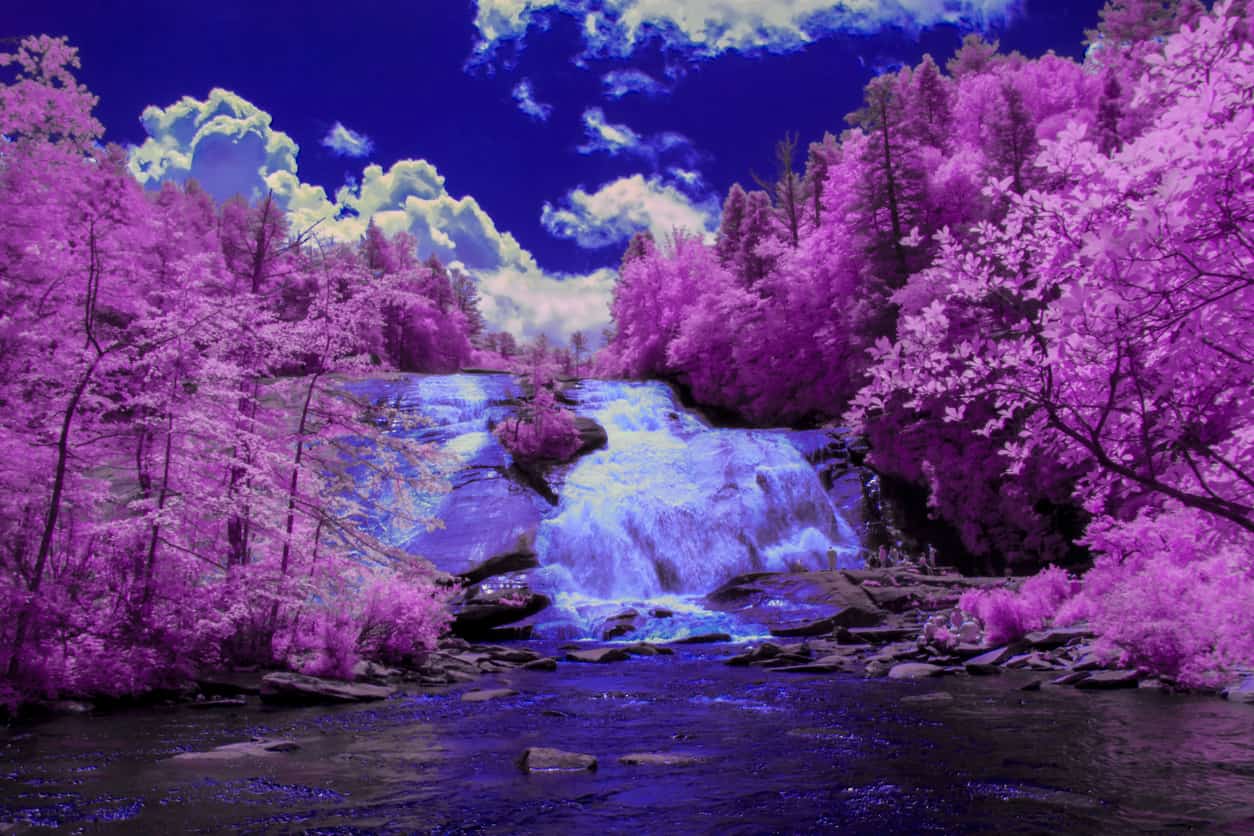Don't miss stories. Follow PhotographyTalk

I love a good landscape photo.
Well, I love any good photo, but landscapes are where it's at for me.
And it seems to be a similar situation for most photographers...
After all, landscapes are accessible, they don't require much in the way of special equipment or gear, and they're always there for you to go back for more as the light changes or new seasons change the way they look.
What's not to like about that?
But, I will admit that the same old landscapes can get a little boring.
Here's a few ideas for expanding your horizons with landscape photography.
Go Up

Drones have made it incredibly easy to photograph landscapes from a new perspective, or at least from a perspective that used to be reserved for plane rides.
This sort of top-down perspective offers a completely different view of even the most iconic of landscapes, and that makes the photos you take immediately more eye-catching.
Taking a photo from above helps the viewer get a better understanding of the lay of the land - that's obvious.
But it also offers insight into the scale of the scene below, which is something that can be difficult to do from a traditional point of view.

There are also opportunities to highlight landscape elements that otherwise go unappreciated.
Take, for example, the image of the trees above.
Note how their shape and texture takes on a completely different look than from what we're used to seeing.
In other words, aerial photography doesn't just challenge you in terms of how you compose and frame your shots, but it also helps you develop your creative eye and look for new and interesting things to highlight in your shots.
Learn more about drone photography in this quick tutorial.
Go Wide

These days, you can create a panoramic landscape photo with nothing more than your mobile phone, so there's really no reason not explore this kind of photography.
Granted, the panoramic photos you can create with your phone aren't going to be of the same quality as those you can create with your DSLR or mirrorless camera, but it's a start!
When taking a panoramic photo with your traditional camera gear, you have to take a series of photos, each overlapping by about 30 percent, with a tripod-mounted camera.
After you do that, you stitch the images together in post-processing to create one large, seamless image.
Though it's a more time-intensive process than simply using your phone, the results you get will be far better.
The above is just a nutshell description of panoramic photography. To get a detailed tutorial on creating this type of photo, check out the video above by AdoramaTV.
Go Long

One of the great things about landscapes is that they change over time.
And one of the great things about landscape photography is that you can utilize a slow shutter speed to blur the movements of landscape elements as time passes.
Whether you set your gear up and blur clouds, water, star trails in the night sky, or even headlights or taillights as cars pass through a landscape, a long exposure can add a level of interest and dynamics to a shot that's impossible to achieve with a typical photo.

From a compositional standpoint, there's really nothing different you need to do for a long exposure, save being careful that you frame the moving elements in the shot.
And from a gear point of view, really all you need in addition to your camera, lens, and tripod is a neutral density filter and a remote shutter release.
So, without too much effort or investment in new gear, you can create images like those seen above.
What's not to like about that?
Learn more about creating long exposures in this detailed guide.
Go Infrared

With so much light beyond the visible spectrum, undertaking something like infrared photography opens up whole new worlds of what landscapes can look like.
There are several key things to bear in mind when going infrared.
First, you need to photograph the right kind of subject, preferably things that are alive because they reflect more infrared light.
That makes landscapes an ideal subject given that there is so much plant matter to reflect that light.

Second, you need an infrared filter such that light from the visible spectrum is blocked.
That's what allows you to create images like the ones seen above.
Lastly, you'll need a tripod to steady your camera because, with the infrared filter attached to your lens, your camera will need a long exposure to get a well-exposed image.
Again, from a compositional standpoint, there's nothing different from what you normally do.
Combined with just a couple of pieces of gear, you've got an easy way to create totally different landscape images!
Learn more about infrared photography in the video above by First Man Photography
Final Thoughts

When it comes down to it, none of the "alternative" types of landscape photography I've outlined above are all that difficult.
Yet, when you try these types of photography, you not only enable yourself to create more unique and impactful landscape images, but you also learn new skills that enable you to also improve your traditional photography.
By that, I mean that you learn how to use new gear, improve your understanding of how to use particular camera settings, and perhaps most importantly, you continue to develop your creative eye.
Give one of these types of photography a try, or try them all. Either way, you'll end up a more skilled photographer as a result!
Hello from PT!
Landscape Photography Tips
Do you lack the depth of knowledge or the skill level needed to replicate the incredible landscape shots you see the pros posting online every single day?
Take our Landscape Photography Course and join the photographers who have fast tracked their learning by mastering the art of taking awe-worthy landscape shots in just a matter of days.
We Recommend
A Step-by-Step Guideline for Long ...
Landscape Photography Primer: Getting ...
8 Insanely Easy Things You Can Do Today ...
7 Tips and Tricks for Photographing ...
Source:
4 Ideas for Unique Landscape Photography

 My book, "The Complete Guide to Digital Infrared Photography," is out-of-print but used copies are available from Amazon at $8.95, as I write this. Creative Digital Monochrome Effects has a chapter on IR photography and is available from Amazon with new copies at a giveaway—less than two bucks— price.
My book, "The Complete Guide to Digital Infrared Photography," is out-of-print but used copies are available from Amazon at $8.95, as I write this. Creative Digital Monochrome Effects has a chapter on IR photography and is available from Amazon with new copies at a giveaway—less than two bucks— price.


















